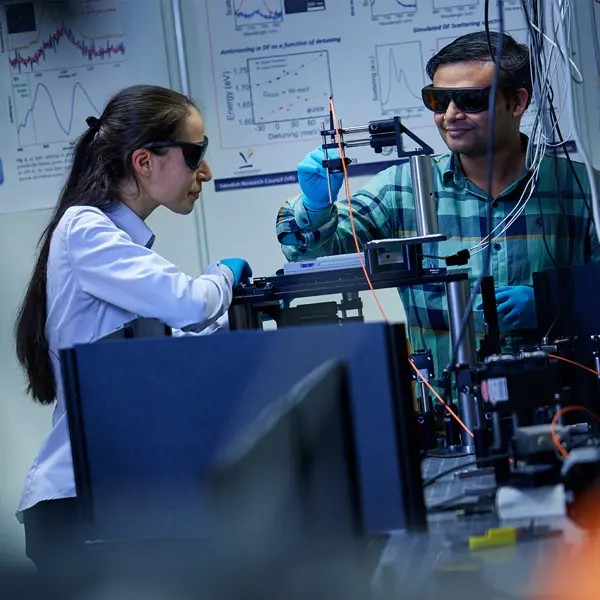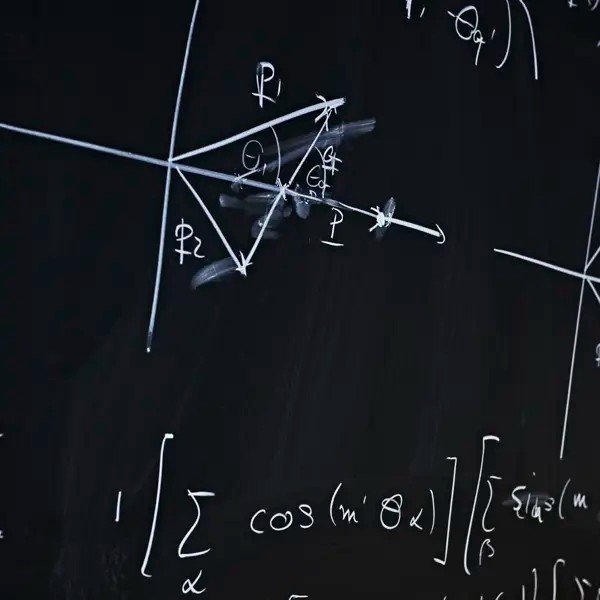
Researchers at Chalmers University of Technology have discovered a way to observe a quantum force – the Casimir force – in real-time under the microscope by using a simple setup of miniscule gold flakes in a salty aqueous solution. Additionally, beautiful colours emerge from the resonances created between the aligned gold flakes, and the researchers can control the colours simply by adding or removing salt.
The researchers have continued building on their breakthrough of 2021, which was presented in Nature, when they discovered that micron-sized gold flakes can magically attract out of seemingly nothing in a salt and water solution at room temperature. This happens because of the so-called Casimir force, a faint quantum force that makes objects attract, in combination with the electrostatic force from the electrical charges on the surface of the flakes.
Their new findings are presented in an article recently published in Science Advances. They have now tested larger gold flakes, ranging between 4 to 10 microns, and found that the force works with larger gold flakes than their previous experiments showed. Research group leader Timur Shegai, Professor at the Department of Physics at Chalmers, points out that it was unexpected for him that the gold flakes of the size of up to ten microns, can be trapped and aligned by Casimir interaction with a precision of a few nanometers.
Colours emerge in optical resonances
The gold flakes attract and self-assemble in a perfect alignment. In the distance between them, that is filled with water, colours emerge due to so-called optical resonances. The resonators formed by two flakes trap light and make it bounce back and forth between them, which is useful for studying light and matter interactions on the nanoscale.
“For me, the most remarkable fact is that we can observe with our eyes through a microscope, in real time, the effect caused by quantum fluctuations for such large particles and located at such relatively large distances. This self-assembled equilibrium distance is unique, as on the one hand, it is large enough to give optical resonances in the visible range, i.e., beautiful colours, and on the other hand, it is small enough to exclude the contribution of classical temperature fluctuations” ,” says Dr. Oleg Kotov, who is the leading theoretical author of the article.
A versatile and tuneable platform
Dr. Betül Küçüköz, research engineer and lead author of the Science Advance’s article, adds:
“When I do the experiments, the colours I see under the microscope range from orange to green, red, and so on. By simply changing the salt concentration, we can tune the colours, which are caused by varying distances between the gold flakes, allowing us to go back and forth as we want. The gold flakes move towards each other and align perfectly due to the lateral and vertical trapping caused by Casimir attraction force.”
The self-assembled Casimir microcavities present a versatile and tuneable platform for nanophotonic, polaritonic, and optomechanical applications. For Timur Shegai though, the beauty of the colours in the experiments might be his key take-away.
“Sometimes science can be beautiful. We don't know yet what these findings are good for, except for being a promising platform for future research. But the aesthetic aspect of this work is a wonderful beginning in itself, let me tell you.”

More about the research:
Quantum trapping and rotational self-alignment in triangular Casimir microcavities was published in Science Advances, April 24 2024. It is written by Betül Küçüköz, Oleg V. Kotov, Adriana Canales, Alexander Yu. Polyakov, Abhay V. Agrawal, Tomasz J. Antosiewicz and Timur O. Shegai.
The research was funded by the Swedish Research Council, the Knut and Alice Wallenberg Foundation, Chalmers Area of Advance Nano, 2D-TECH Vinnova competence center, Olle Engkvists foundation, and the Polish National Science Center. The computations were enabled by resources provided by the Swedish National Infrastructure for Computing (SNIC) at PDC and by the Interdisciplinary Centre for Mathematical and Computational Modelling at the University of Warsaw.
Contact
- Head of Unit, Physics
- Research Engineer, Nano and Biophysics, Physics




